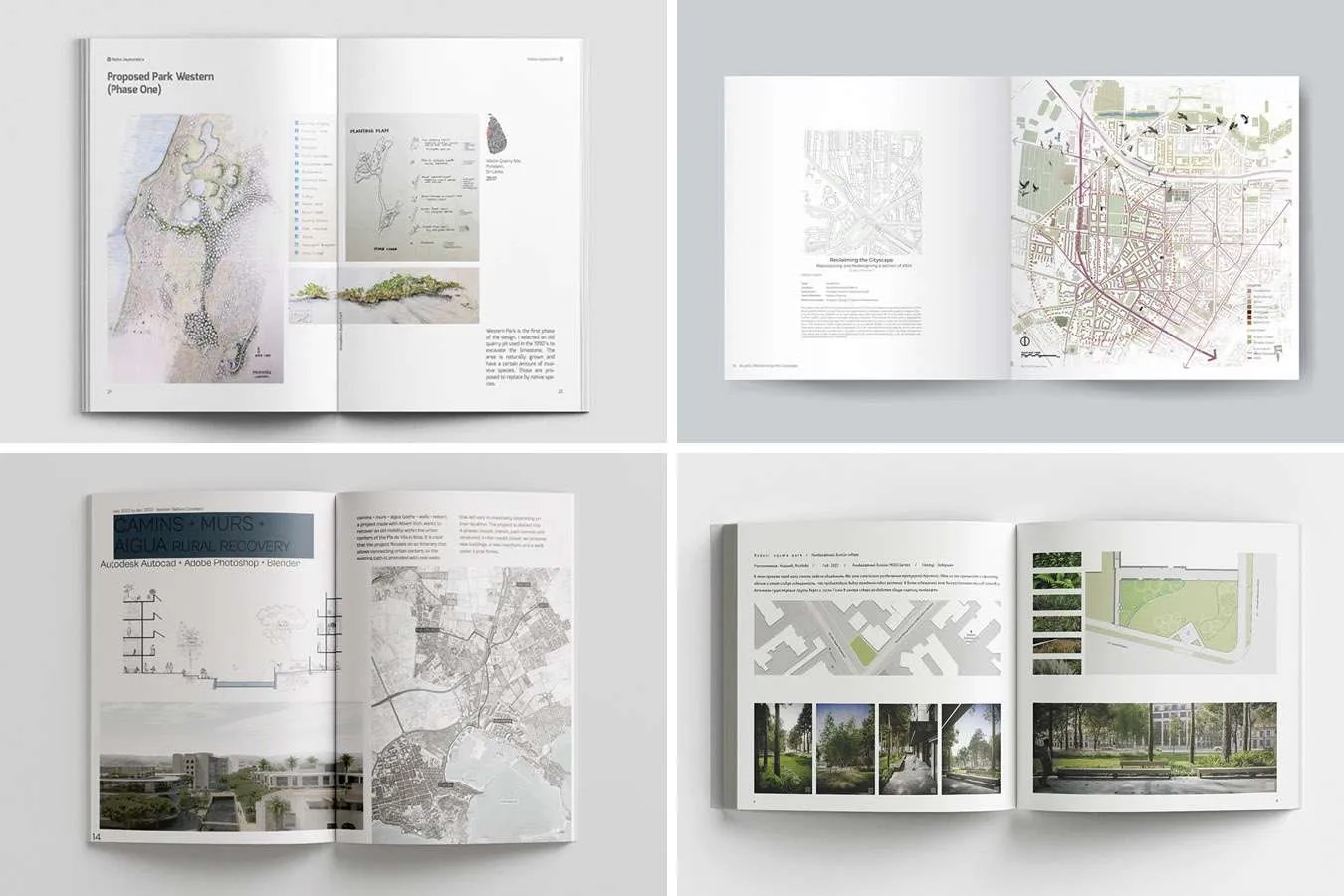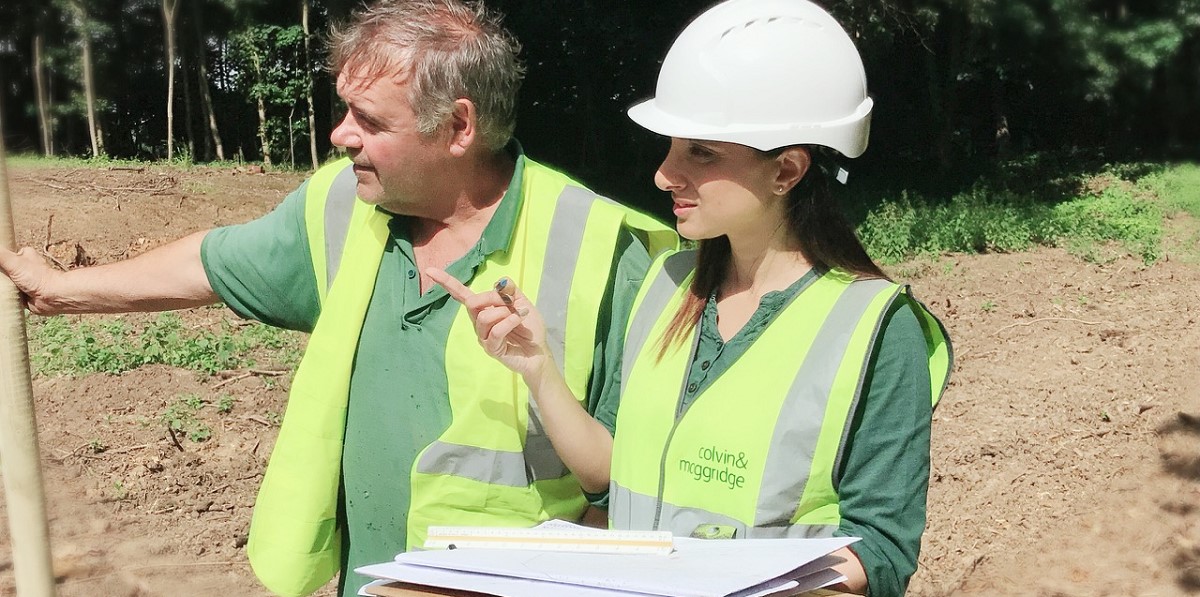Home>diy>Planning & Engineering>How To Make More Money As A Landscape Architect


Planning & Engineering
How To Make More Money As A Landscape Architect
Modified: March 24, 2024
Learn the secrets to increase your income as a landscape architect by incorporating effective planning and engineering techniques. Boost your earnings now!
(Many of the links in this article redirect to a specific reviewed product. Your purchase of these products through affiliate links helps to generate commission for Storables.com, at no extra cost. Learn more)
Introduction
Welcome to the world of landscape architecture, a profession that combines art, science, and engineering to transform outdoor spaces into stunning works of art. As a landscape architect, you have the unique opportunity to shape the environment, create inspiring designs, and enhance the quality of life for individuals and communities.
However, like many professionals, you may be looking for ways to increase your income and achieve financial success in your career. In this article, we will explore various strategies and tips that can help you make more money as a landscape architect.
Before we dive into the specific strategies, it’s important to understand the landscape architecture industry as a whole. The field encompasses a wide range of projects, including residential, commercial, and public spaces. From designing private gardens to planning large-scale parks and urban developments, landscape architects play a crucial role in shaping the landscapes we inhabit.
With this understanding, let’s explore the different avenues you can explore to maximize your income as a landscape architect.
Key Takeaways:
- Embrace diversification by offering consulting, project management, design-build services, and education to maximize income potential as a landscape architect.
- Leverage technology, social media, and passive income opportunities to expand reach, attract new clients, and generate additional revenue streams in the landscape architecture industry.
Read more: How To Make Money From Landscaping
Understanding the Landscape Architecture Industry
Before embarking on your journey to make more money as a landscape architect, it’s essential to have a comprehensive understanding of the industry. This knowledge will allow you to identify potential opportunities and position yourself for success.
Firstly, it’s important to recognize that the landscape architecture industry is highly competitive. There are numerous talented professionals vying for clients and projects. To stand out from the crowd, you need to develop a unique selling point that sets you apart.
Additionally, the industry is constantly evolving, with new trends, technologies, and sustainability practices emerging. Staying up-to-date with these changes is crucial to remain relevant and sought-after. Attend industry conferences, join professional organizations, and engage in continued education to expand your knowledge and skills.
Furthermore, it’s essential to understand your target market and clients’ needs. Determine the demographics, preferences, and budgets of your potential clients. This will enable you to tailor your services and marketing efforts to meet their specific requirements.
Lastly, be aware of the economic factors that influence the landscape architecture industry. Fluctuations in the real estate market, changes in government regulations, and shifts in public demand can impact the availability and nature of projects. Stay vigilant and adapt your strategies accordingly to navigate these challenges.
By thoroughly understanding the landscape architecture industry, you can position yourself strategically and make informed decisions to maximize your earning potential.
Identifying Potential Income Streams
To make more money as a landscape architect, it’s crucial to identify and diversify your income streams. In addition to traditional design services, exploring alternative avenues can significantly boost your earning potential. Here are a few potential income streams to consider:
- Consulting Services: Offer your expertise and knowledge as a consultant to clients looking for guidance on landscape design, sustainability practices, or project management. Consulting can be done on an hourly basis or as a package of services tailored to the client’s needs.
- Project Management: Take on the role of project manager for clients who require assistance in overseeing the implementation of their landscape projects. This includes managing budgets, timelines, and coordinating various contractors and vendors involved in the project.
- Design-Build Services: Consider expanding your services to include design-build projects. This involves taking on both the design and construction aspects of a project, offering a seamless, one-stop solution to clients. This can be particularly lucrative as it allows you to have more control over the entire project and potentially charge higher fees.
- Green Roof and Living Wall Design: With the growing interest in sustainable practices, specializing in green roof and living wall design can be a niche that sets you apart. These environmentally-friendly features are in high demand, and clients are willing to pay a premium for professionals with expertise in this area.
- Education and Training: Share your knowledge and passion for landscape architecture by offering workshops, courses, or webinars. This can be targeted towards aspiring landscape architects, professionals in related fields, or even amateur gardeners who want to enhance their skills. Not only does this generate additional income, but it also establishes you as an authority in the industry.
- Product Sales: Consider creating and selling landscape-related products, such as custom-designed furniture, planters, or outdoor decor. This can be done through an online store or by partnering with local retailers. Your unique designs and expertise will attract customers who value quality and aesthetics.
By diversifying your income streams and exploring these different avenues, you can increase your earning potential and open up new opportunities in the landscape architecture industry.
Building a Strong Portfolio
A strong portfolio is a powerful tool in showcasing your skills, expertise, and creativity as a landscape architect. It not only attracts potential clients but also gives them confidence in your ability to deliver exceptional results. Here are some tips for building a strong portfolio:
- Select Your Best Work: Choose projects that highlight your design style, technical proficiency, and ability to solve complex challenges. Showcase a variety of projects that demonstrate your versatility and expertise in different types of landscapes, such as residential, commercial, or public spaces.
- Include High-Quality Images: Invest in professional photography or use high-resolution images to capture your projects. Clear, well-lit, and visually compelling images can make a significant impact and enhance the overall presentation of your portfolio.
- Show the Design Process: Provide insight into your design process by including sketches, concept drawings, and renderings. This allows clients to understand your creative approach and envision how their project will come to life.
- Highlight Sustainable Practices: Emphasize your commitment to sustainability by showcasing projects that incorporate environmentally-friendly features, such as rainwater harvesting systems, native plantings, or energy-efficient lighting. Clients increasingly value eco-conscious designs and will be more likely to choose a landscape architect who demonstrates expertise in this area.
- Show Before and After Transformations: Include before and after images or descriptions of projects to highlight the transformative power of your designs. This not only captures clients’ attention but also demonstrates your ability to reimagine and enhance outdoor spaces.
- Include Testimonials and Recommendations: Incorporate testimonials and recommendations from satisfied clients to provide social proof of your skills and professionalism. Positive feedback helps build trust and credibility, making potential clients more likely to choose your services.
- Update and Refresh Regularly: Continually update your portfolio with new projects, as well as any awards, publications, or recognition you have received. Keep your portfolio fresh and relevant to showcase your growth as a landscape architect.
Remember, your portfolio should be visually engaging, organized, and easy to navigate. Consider creating both a physical portfolio and an online portfolio to cater to different preferences and situations.
By building a strong portfolio that effectively showcases your skills and expertise, you’ll be more likely to attract clients and secure higher-paying projects, ultimately increasing your income as a landscape architect.
Marketing and Networking Strategies
Effective marketing and networking are essential for expanding your client base and increasing your earning potential as a landscape architect. By implementing the right strategies, you can attract new clients, gain referrals, and establish yourself as a trusted professional in the industry. Here are some marketing and networking tips to help you succeed:
- Develop a Strong Online Presence: Create a professional website that showcases your portfolio, services, and contact information. Optimize your website for search engines by incorporating relevant keywords and ensuring it is mobile-friendly. Additionally, leverage social media platforms like Instagram, Facebook, and LinkedIn to share your work, engage with potential clients, and build a following.
- Attend Industry Events and Conferences: Participate in landscape architecture conferences, trade shows, and networking events to connect with industry professionals, potential clients, and suppliers. Stay informed about the latest trends, technologies, and opportunities in the field. Networking at these events can lead to valuable connections and partnerships.
- Cultivate Relationships with Industry Peers: Build relationships with other professionals in related fields, such as architects, interior designers, contractors, and engineers. Collaborating with these professionals can lead to referrals and joint projects, expanding your reach and potential client base.
- Offer Pro Bono Work: Consider offering your services pro bono for a charitable organization or community project. This not only allows you to contribute to a cause you care about but also provides an opportunity to showcase your skills and gain exposure. Word of your philanthropic efforts may spread, leading to paid opportunities from those who appreciate your work.
- Solicit Testimonials and Referrals: Ask satisfied clients for testimonials and referrals. Positive word-of-mouth is one of the most powerful marketing tools. With clients’ permission, showcase their testimonials on your website or in marketing materials to build credibility and trust.
- Invest in targeted Advertising: Consider allocating a portion of your budget towards targeted online advertising, such as Google Ads or Facebook Ads. This allows you to reach a specific audience, based on location, interests, or demographics, maximizing the chances of attracting potential clients interested in landscape architecture services.
- Publish Expert Content: Share your expertise and insights in the form of blog posts, articles, or guest contributions to relevant publications. This not only establishes you as an authority in the field but also helps drive traffic to your website and increases your visibility among potential clients.
- Build Strategic Partnerships: Collaborate with complementary businesses like garden centers, plant nurseries, or outdoor furniture retailers. Cross-promote each other’s services and leverage each other’s client base to widen your reach and attract new clients.
Remember, consistency and persistence are key when it comes to marketing and networking. As you implement these strategies, track and analyze your results to make informed decisions on where to focus your efforts and resources.
By employing effective marketing and networking techniques, you can increase your visibility, attract new clients, and ultimately boost your income as a landscape architect.
Enhancing Skills and Knowledge
Continuous learning and skill development are crucial for staying competitive in the field of landscape architecture. By enhancing your skills and knowledge, you not only offer more value to clients but also increase your earning potential. Here are some strategies to help you continuously improve as a landscape architect:
- Attend Workshops and Conferences: Participate in workshops, seminars, and conferences specific to landscape architecture. These events provide opportunities to learn from industry experts, gain insights into new technologies and techniques, and network with fellow professionals.
- Obtain Certifications and Professional Training: Consider pursuing certifications or specialized training programs in areas such as sustainable design, urban planning, or environmental management. These credentials enhance your credibility and demonstrate your commitment to professional growth.
- Join Professional Organizations: Become a member of landscape architecture associations and organizations at local, national, and international levels. These organizations provide access to resources, networking opportunities, and educational programs to keep you informed about the latest industry trends and best practices.
- Seek Mentorship Opportunities: Reach out to experienced professionals in the industry who can serve as mentors or advisors. Their guidance and insights can help you improve your skills, navigate challenges, and make informed career decisions.
- Utilize Online Learning Platforms: Take advantage of online learning platforms that offer courses, webinars, and tutorials related to landscape architecture. Platforms like Coursera, Udemy, and LinkedIn Learning provide flexibility and access to a wide range of topics that can enhance your design, technical, and project management skills.
- Stay Updated on Industry Trends: Follow industry publications, magazines, and blogs to stay informed about the latest trends, innovations, and emerging practices in landscape architecture. Having a pulse on industry trends can help you offer forward-thinking solutions to clients and differentiate yourself from competitors.
- Engage in Collaborative Projects: Seek opportunities to collaborate with professionals from diverse backgrounds, such as architects, urban planners, or environmental scientists. These collaborative projects expand your knowledge and expose you to new perspectives, ultimately enriching your skillset as a landscape architect.
- Practice Continual Self-Reflection: Regularly assess your work and seek feedback from clients, peers, and mentors. Use constructive criticism to identify areas for improvement and develop strategies to enhance your skills. Reflecting on your past projects allows you to grow and refine your design approach over time.
Remember, investing in your skills and knowledge is an investment in your long-term career success. By continually enhancing your expertise, you not only provide better services to clients but also position yourself for higher-paying projects and opportunities.
Pricing Services Effectively
Determining the right pricing strategy is crucial for maximizing your income as a landscape architect. While it can be challenging to strike a balance between competitiveness and profitability, here are some tips to help you price your services effectively:
- Consider Your Costs: Start by calculating your overhead costs, such as office rent, utilities, software, and equipment expenses. Factor in your time, expertise, and labor costs to determine your minimum hourly rate or project fee.
- Research the Market: Research your local market to understand the average rates charged by other landscape architects and designers. This will give you an idea of industry standards and help you position your pricing strategy accordingly.
- Define Your Value Proposition: Identify what sets you apart from competitors and the unique value you bring to clients. Consider your expertise, design approach, sustainability practices, or specialized services. Price your services accordingly to reflect this value proposition.
- Offer Different Service Packages: Provide a range of service packages to cater to different client budgets and needs. This can include basic design consultations, full landscape design and planning, or ongoing maintenance and project management. By offering tiered packages, you can appeal to a broader range of clients.
- Consider Complexity and Scope of Projects: Assess the complexity and scale of each project before determining your price. Larger or more intricate projects may require more resources and time, warranting higher fees. Make sure your pricing aligns with the level of effort and expertise required.
- Factor in Profit Margin: Your pricing should allow for an appropriate profit margin. Consider the value you provide, level of competition, and your desired profitability. Don’t undersell your services to the point where you are not earning a reasonable profit.
- Communicate Your Pricing Clearly: Be transparent and clear when communicating your pricing to clients. Provide detailed explanations of what is included in your services and any potential additional costs they should be aware of, such as revisions or additional design work.
- Offer Upselling and Add-On Services: Identify additional services or features that clients may find valuable and offer them as optional add-ons. This allows clients to customize their projects and provides opportunities for you to increase your overall revenue.
- Regularly Review and Adjust Your Pricing: Regularly assess the market, monitor your expenses, and evaluate your profitability. Adjust your pricing strategy as needed to ensure you are competitive and maintaining a healthy profit margin.
Remember, pricing is a balance between offering competitive rates and earning a fair income for your expertise. By carefully considering your costs, market conditions, and value proposition, you can effectively price your services to maximize your earning potential as a landscape architect.
Consider specializing in a niche market such as sustainable design or urban planning to set yourself apart and attract higher-paying clients.
Expanding Your Client Base
Expanding your client base is essential for increasing your income as a landscape architect. By reaching a wider audience and attracting new clients, you create more opportunities for lucrative projects. Here are some strategies to help you expand your client base:
- Create a Strong Online Presence: Establish a professional website and optimize it for search engines. Utilize social media platforms to share your work, engage with potential clients, and boost your online visibility. Consider starting a blog or sharing informative content to position yourself as an industry expert and attract organic traffic.
- Utilize Online Directories and Platforms: List your services on relevant online directories and platforms for landscape architects. This increases your online presence and makes it easier for potential clients to find and contact you. Examples include Houzz, Thumbtack, and local business directories.
- Network with Other Professionals: Build relationships with professionals in related fields such as architects, contractors, interior designers, and real estate agents. Collaborate on projects and refer clients to one another. By expanding your network and partnering with complementary professionals, you increase your exposure to new potential clients.
- Attend Trade Shows and Exhibitions: Participate in industry-specific trade shows, exhibitions, and home improvement shows. Set up a booth to showcase your work and network with attendees. These events attract homeowners, developers, and businesses looking for landscape architecture services, providing you with direct access to potential clients.
- Offer Free Consultations or Workshops: Attract potential clients by offering free consultations or workshops to provide value upfront. This allows you to showcase your expertise, demonstrate your creativity, and build trust with potential clients. Use these opportunities to educate clients about the benefits of professional landscape architecture and how you can help bring their vision to life.
- Develop Strategic Partnerships: Collaborate with local businesses and organizations that align with your target market. This can include partnerships with nurseries, garden centers, home builders, or community associations. Cross-promote each other’s services or offer special discounts to each other’s customers to expand your reach and attract new clients.
- Request Referrals from Satisfied Clients: Reach out to your satisfied clients and ask for referrals. Word-of-mouth recommendations from happy clients carry significant weight and can lead to new business opportunities. Offer incentives, such as referral discounts or free upgrades, as a token of appreciation for clients who refer new clients to you.
- Showcase Your Expertise Through Content Marketing: Share your knowledge and expertise through content marketing. Create informative blog posts, videos, or social media content that educates and engages your target audience. This establishes you as a thought leader in the industry and increases your credibility, making potential clients more likely to choose your services.
- Target Specific Niches or Industries: Identify specific niches or industries that align with your skills and experience. Develop targeted marketing campaigns to reach these potential clients, highlighting your expertise in their specific needs. This approach allows you to position yourself as a specialist in their desired field, making it more likely for them to choose your services.
Expanding your client base requires a strategic and proactive approach. By implementing these strategies, you can widen your reach, attract new clients, and ultimately increase your income as a landscape architect.
Collaborating with Other Professionals
Collaboration with other professionals in related fields can be mutually beneficial and enhance your earning potential as a landscape architect. By joining forces with architects, interior designers, contractors, and other experts, you can offer comprehensive services and tap into new markets. Here are some strategies for successful collaboration:
- Build a Network of Professionals: Start by developing relationships with professionals in your local area or industry. Attend industry events, join professional organizations, and participate in networking activities to connect with potential collaborators. Building a strong network provides opportunities for collaboration and referrals.
- Offer a Comprehensive Service Package: Position yourself as a one-stop solution by offering a comprehensive package that includes both landscape architecture and related services. This can include design, architectural planning, project management, interior design, or construction oversight. Providing a seamless and holistic experience to clients increases the value of your services and sets you apart from competitors.
- Identify Complementary Professionals: Look for professionals whose services align with your expertise and target market. For example, partnering with an interior designer allows you to create cohesive indoor-outdoor spaces. Collaborating with architects can lead to joint projects that require integrated design solutions. Select partners whose skills and specialties complement your own.
- Establish Clear Roles and Responsibilities: When collaborating on projects, clarify each professional’s roles and responsibilities to avoid confusion or conflicts. Clearly define the scope of each party’s work and establish open lines of communication. Collaborative projects require effective teamwork and cooperation, so it’s crucial to establish clear expectations from the start.
- Share Resources and Expertise: Pooling resources and expertise with collaborators can lead to better project outcomes and cost efficiencies. Share industry knowledge, project management tools, and supplier networks to streamline processes and deliver exceptional results. A collaborative approach allows you to tap into a wider range of skills and experiences, ultimately benefiting the client and increasing your reputation.
- Promote each Other’s Services: Collaborators can help promote your services to their existing client base and vice versa. Cross-promote each other’s work through social media, websites, and professional networks. Testimonials, case studies, and joint marketing materials can also be effective in showcasing successful collaborations and attracting new clients.
- Communicate and Collaborate Effectively: Regular communication is key to successful collaboration. Establish open lines of communication, whether through email, phone calls, or project management tools. Set regular meetings to discuss project progress, resolve challenges, and align on project goals. Effective collaboration ensures smooth project workflows and enhances the overall client experience.
- Share Success Stories and Client Testimonials: Highlight successful collaborations and client testimonials on your website and marketing materials. This showcases your ability to work effectively with other professionals and assures potential clients of your commitment to delivering exceptional results. Demonstrating a track record of successful collaborations can attract clients who value integrated design services.
Collaborating with other professionals expands your service offerings, enhances project outcomes, and opens up new client opportunities. By fostering strong relationships and working collaboratively, you can tap into a wider market and increase your earning potential as a landscape architect.
Read more: How To Choose A Landscape Architect
Leveraging Technology and Social Media
In the digital age, leveraging technology and social media is essential for expanding your reach and maximizing your income as a landscape architect. By utilizing these tools effectively, you can showcase your work, connect with potential clients, and stay ahead of industry trends. Here are some strategies for leveraging technology and social media to your advantage:
- Create a Professional Website: Establish a professional website that showcases your portfolio, services, and contact information. Your website should be visually appealing, easy to navigate, and optimized for search engines. Include high-quality images of your projects and compelling content that demonstrates your expertise in landscape architecture.
- Optimize Your Website for Search Engines: Incorporate relevant keywords throughout your website to improve its visibility in search engine results. Research industry-specific keywords that potential clients may use when searching for landscape architecture services in your area. This increases the chances of your website appearing higher in search rankings, attracting more organic traffic, and generating leads.
- Utilize Social Media Platforms: Establish a presence on social media platforms such as Instagram, Facebook, and LinkedIn. Share engaging content, including photos, videos, and informative posts about landscape architecture. Use relevant hashtags and interact with your audience to increase your visibility and build a community of followers who are interested in your work.
- Showcase Your Work on Visual Platforms: Visual platforms like Instagram, Pinterest, and Houzz are ideal for showcasing your portfolio and attracting potential clients. Regularly update these platforms with high-quality images of your projects, highlighting different design styles and techniques. Engage with users, follow relevant accounts, and leverage the power of visual inspiration to attract attention and generate leads.
- Create Engaging and Educational Content: Use your website and social media platforms to share educational and informative content related to landscape architecture. Create blog posts, videos, or infographics that offer insights into design tips, sustainability practices, or outdoor living ideas. This positions you as an industry expert and provides value to potential clients, increasing their trust in your expertise and attracting more leads.
- Promote Your Work through Online Reviews and Testimonials: Encourage satisfied clients to leave positive reviews and testimonials on platforms like Google My Business, Yelp, or Houzz. Online reviews help build trust and credibility with potential clients who are researching landscape architects. Respond to reviews in a timely and professional manner to showcase your commitment to client satisfaction.
- Stay Up-to-Date with Industry Software and Tools: Invest in industry-specific software and tools to streamline your design and project management processes. Utilize computer-aided design (CAD) software, 3D rendering tools, and project management applications to enhance your efficiency and deliver high-quality results. Staying current with technology not only improves your workflow but also sets you apart as a modern and efficient landscape architect.
- Engage with Online Communities: Join online communities, forums, or groups related to landscape architecture. Participate in discussions, offer advice, and share your expertise. Engaging with professionals and enthusiasts in these communities not only helps you stay updated on industry trends but also expands your network and attracts potential clients and collaborations.
By leveraging technology and social media effectively, you can significantly enhance your online presence, attract a wider audience, and increase your income as a landscape architect. Embrace these digital tools and platforms as valuable assets in building your brand and expanding your reach in today’s interconnected world.
Adapting to Industry Trends and Demands
In the ever-evolving landscape architecture industry, it is essential to adapt to emerging trends and shifting demands to stay relevant and maximize your income. By staying proactive and responsive, you can position yourself as a forward-thinking professional and meet the evolving needs of clients. Here are some strategies for adapting to industry trends and demands:
- Stay Informed: Stay up-to-date with the latest industry trends, innovations, and best practices. Subscribe to industry publications, follow influential blogs and social media accounts, and attend conferences and workshops. By staying informed, you are better equipped to anticipate and respond to changing demands.
- Embrace Sustainable Design: Sustainability is a growing priority for clients and an important industry trend. Familiarize yourself with sustainable design principles and practices, such as incorporating native plants, using water-efficient irrigation systems, and implementing green infrastructure. Positioning yourself as an expert in sustainable design can attract environmentally conscious clients and open doors to new opportunities.
- Offer Smart Technology Integration: As smart technology becomes more prevalent in homes and buildings, clients are increasingly interested in integrating these systems into their outdoor spaces. Familiarize yourself with smart irrigation systems, automated lighting, and outdoor audiovisual systems. By offering expertise in smart technology integration, you can cater to the demands of tech-savvy clients and differentiate yourself in the marketplace.
- Explore Low-Maintenance Landscapes: Many clients today are seeking low-maintenance landscapes that require less water, maintenance, and resources. Incorporate drought-tolerant plants, efficient irrigation systems, and self-sustaining landscape features into your designs. Adapting to this demand for low-maintenance landscapes can attract clients who value sustainability and resource efficiency.
- Stay Ahead with 3D Visualization: Utilize 3D visualization tools and software to create realistic renderings and virtual tours of your designs. This allows clients to visualize their projects before they are implemented and increases their confidence in your design capabilities. Embracing 3D visualization demonstrates your ability to adopt cutting-edge technology and deliver innovative solutions.
- Incorporate Wellness and Biophilic Design: With growing awareness of the impact of the built environment on human health and well-being, clients are showing increased interest in wellness and biophilic design. Integrate elements like green spaces, natural light, and materials that promote a connection with nature. Designing outdoor spaces that prioritize human well-being can differentiate you as a landscape architect who understands the importance of creating environments that support health and happiness.
- Adapt to Urban and High-Density Living: As urbanization continues to rise, the demand for landscape architecture in urban and high-density areas grows. Adapt your designs to address the unique challenges and possibilities presented by urban environments. Consider rooftop gardens, vertical landscapes, and pocket parks. Specializing in urban design can open up opportunities for projects in densely populated areas.
- Engage with Community and Public Spaces: There is a growing interest in enhancing community spaces and public parks to promote social interaction and well-being. Engage with local municipalities, community groups, and organizations to contribute to public space design projects. Participating in civic initiatives not only benefits the community but also raises your profile as a landscape architect committed to creating meaningful outdoor spaces.
By proactively adapting to industry trends and demands, you can position yourself as a knowledgeable and innovative landscape architect. Embrace new practices, technologies, and design principles that align with the evolving needs of clients and society. By staying ahead of the curve, you can attract more clients, diversify your project portfolio, and maximize your income.
Creating Passive Income Opportunities
Creating passive income opportunities as a landscape architect can provide a steady stream of income outside of your traditional design services. Passive income enables you to generate revenue even when you’re not actively working on client projects. Here are some strategies to consider when creating passive income opportunities:
- Create Digital Products: Develop and sell digital products related to landscape architecture. This can include e-books or digital guides on topics like sustainable garden design, outdoor living spaces, or DIY landscaping projects. Utilize your expertise to create valuable educational resources that can be purchased and downloaded by interested individuals.
- License Your Designs: Consider licensing your designs to manufacturers or retailers who specialize in outdoor products. This allows you to earn passive income from the sale of products featuring your unique designs. Collaborate with manufacturers of outdoor furniture, planters, or garden accessories to create licensed products that align with your design aesthetic.
- Monetize Your Website or Blog: If you have a blog or website related to landscape architecture, explore monetization options such as display advertising, sponsored content, or affiliate marketing. By partnering with relevant advertisers or brands, you can earn passive income through advertising and commissions when readers click on ads or make purchases through your affiliate links.
- Create Online Courses or Workshops: Develop online courses or workshops where you can teach others about landscape architecture and related topics. Design a curriculum and share your knowledge through video lessons, interactive exercises, and downloadable resources. Once the courses are created, they can be sold repeatedly, generating passive income from enrolments.
- Invest in Real Estate: Consider investing in real estate properties with outdoor spaces that would benefit from your design expertise. Purchase properties to renovate, improve the landscaping, and then sell or rent them out. Real estate investments can provide ongoing passive income through rental income or appreciation in property value.
- Offer Stock Photography: If you have a talent for photography, consider selling stock photographs of landscapes, garden designs, or outdoor environments. There are many online marketplaces where you can submit and sell your photos. This allows you to earn royalties whenever someone purchases the rights to use your photographs.
- Develop a Landscape Design Template Library: Create a library of pre-designed landscape templates that homeowners or other professionals can purchase and customize. These templates can include basic garden layouts for different property sizes, plant recommendations, and design elements. Selling ready-to-use templates provides an additional passive income stream while still allowing clients to personalize their designs.
- Invest in Rental Properties with Landscaping Potential: Consider purchasing rental properties with ample outdoor space and the potential for landscaping improvements. Enhancing the outdoor areas can attract higher-quality tenants and increase rental income. Additionally, you can offer landscaping services as an upsell to tenants, providing an additional revenue stream.
- Create Membership-Based Services: Develop a membership-based service that offers exclusive access to additional design resources, ongoing consultations, or specialized content. Members pay a recurring fee for access to these premium services and resources, providing you with a predictable and recurring passive income stream.
Creating passive income opportunities as a landscape architect allows you to leverage your expertise and generate additional income beyond your traditional client projects. Explore these strategies, adapt them to your skills and interests, and find the right combination of passive income streams that align with your goals and aspirations.
Conclusion
As a landscape architect, there are numerous opportunities to increase your income and achieve financial success in your career. By implementing the strategies outlined in this article, you can maximize your earning potential while providing exceptional design services to your clients.
Understanding the landscape architecture industry, identifying potential income streams, and building a strong portfolio are critical steps in positioning yourself for success. Effective marketing and networking strategies help expand your client base and increase your visibility. Enhancing your skills and knowledge ensures you stay ahead of industry trends and provide innovative solutions to clients.
Pricing your services effectively and adapting to industry demands are key to staying competitive and attracting new clients. Collaborating with professionals in related fields and leveraging technology and social media expand your reach and open up new opportunities. Finally, creating passive income streams allows you to earn income even when not actively working on client projects.
Remember, financial success as a landscape architect requires a commitment to continuous learning, adaptability, and a proactive approach to business. Stay connected with industry trends, seek opportunities for growth, and always deliver exceptional work to your clients.
By applying these strategies and investing in your career, you can make more money as a landscape architect and build a thriving, fulfilling, and financially rewarding profession in the world of landscape architecture.
Frequently Asked Questions about How To Make More Money As A Landscape Architect
Was this page helpful?
At Storables.com, we guarantee accurate and reliable information. Our content, validated by Expert Board Contributors, is crafted following stringent Editorial Policies. We're committed to providing you with well-researched, expert-backed insights for all your informational needs.














0 thoughts on “How To Make More Money As A Landscape Architect”